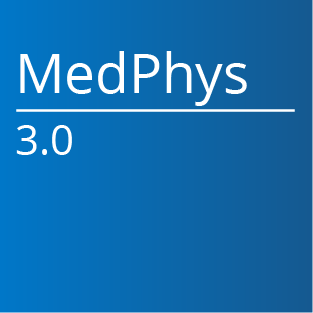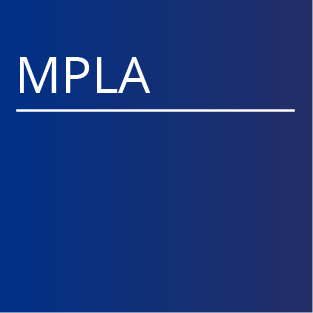| This Policy is No Longer Active. | |||
| Policy number | Policy name | Policy date | Sunset date |
|---|---|---|---|
| PUB 3-A | Instructions to Authors and Reviewers: Medical Physics Dataset Article | 3/20/2018 | 3/20/2023 |
Section |
|||
| Policy source | |||
| Policy text | |||
|
Instructions to Authors and Reviewers: Medical Physics Dataset Article A. Scope and Submission GuidelinesMedical Physics Dataset Articles (MPDAs) describe scientifically or clinically valuable open-access datasets with high potential for contributing to the research of medical physicists and other investigators working on related problems. In contrast to Research Articles, MPDAs should not include hypothesis testing or data analyses supporting generalizable conclusions. MPDAs should provide detailed descriptions of high impact and re-usable research/clinical practice datasets, including the value; scope; conditions of acquisition; known limitations; curation and quality assurance processes; and format of the dataset. Comprehensive descriptive analysis is required and graphical visualizations are allowed and even encouraged to better understand the dataset. MPDAs should focus on helping others reuse data for primary or secondary analyses, rather than testing hypotheses, or presenting new interpretations, methods or in-depth analyses. Example of use cases beyond original application are also encouraged. As a condition of submission and acceptance of a MPDA, the authors must place the dataset in a recognized and stable data archive prior to submission that makes the data available to other investigators with limited restrictions for commercial use but none for scientific purposes. As with all Medical Physics articles, submitted MPDA manuscripts will be peer-reviewed for possible publication. Editorial evaluation and peer review of MPDAs will consider their novelty, importance to the field, completeness quality of the dataset, reusability, and accessibility. The data must be made publicly available without restriction in the event that the Medical Physics Dataset Article is accepted for publication. MPDAs describing collections of images derived from obsolete imaging devices; images or data acquired under poorly controlled conditions; or datasets lacking sufficient annotations, e.g., physician-drawn contours, segmentation landmark, or clinical diagnoses or clinical outcomes, to support hypothesis-driven research will likely be rejected. It is essential that the authors make a convincing case for the value and the potential reusability of the dataset. A.1 Data acquisition policies and selection of a repositoryIt is Medical Physics’ policy that all key datasets described by a Medical Physics Dataset Article manuscript -including computational data, curated data, and data acquired via an experimental or observational procedure– should be placed in an appropriate external repository prior to submission of the manuscript. We believe that this is the best means of making these data discoverable, reproducible and reusable, and we will work with our authors to identify the most appropriate location(s) for their datasets. Authors should provide their data in the ‘rawest’ form that will permit substantial reuse. It may be advantageous to release some types of data at multiple levels to enable their broadest reuse, for example, CT sinogram data may best be released as ‘raw’ readings, including only detector response and background corrections, as well as more processed sinograms including flood fielding and water-equivalent beam hardening corrections. Authors may also submit supplementary information files – including code, models, workflows and summary tables – via the American Institute of Physics’ (American Institute of Physics Publishing (AIPP) is our current publisher) Electronic Physics Auxiliary Publication Service (EPAPS), and Wiley Figshare. However, primary data should not be submitted as supplementary information unless EPAPS/Figshare has been approved as the primary repository. All code and information needed for the Referees to access and manipulate the data must be provided at submission. Data, including headers and metadata, derived from patient studies must be fully anonymized and free of protected health information (PHI). All human or animal research studies from which the dataset was derived must have adhered to human health services (HHS) and all other applicable regulations and ethical guidelines with any necessary institutional review board (IRB) permissions. Finding appropriate digital repositories for large and complex datasets is challenging. Currently, neither the American Association of Physicists in Medicine (AAPM) nor our publisher are able to provide archiving and curation for large datasets. A trusted archive must
The trusted repository selected by a Medical Physics Dataset Article author must be approved by the Editor-in-Chief if it is not on our preapproved list of repositories. The current preapproved repositories include
Currently, we cannot review MPDA until the dataset has been archived in a final form prior to submission. If the authors would prefer another repository or foresee some delays before finalizing the data in the designated repository, this needs to be conferred with the MPDA editor. Currently our top choice of repository is The Cancer Imaging Archive (TCIA) (http://www.cancerimagingarchive.net/). The TCIA is limited to image-related datasets that have potential for contributing to cancer research and their metadata (clinical information). The TCIA welcomes a large variety cancer-imaging relevant datasets, including those useful for radiomics marker development; algorithm validation; and optimization of image-guided therapies. TCIA provides extensive curation resources, including conversion to DICOM format and data anonymization. It is the Editors’ hope that the majority of MPDA submissions will be able to utilize TCIA curation for their datasets. TCIA has an internal National Cancer Institute (NCI) steering committee that must independently review and approve all data collections submitted to TCIA. The Editors have met with NCI and have agreed to work together in order to develop a parallel review process that includes both TCIA review and editorial evaluation of the accompanying MPDA manuscript. However, at this time, we cannot review such MPDA manuscripts until the dataset in question has been accepted by TCIA and made available to our Review Team. The Zenodo, Dryad, and XNAT are uncurated repositories. Neither entity places topical restrictions on the datasets nor do they provide curation services. Quality, integrity, and completeness of the data are the authors’ responsibility. Zenodo provides free storage for uploads less than 10 GB while Dryad charges $120 for datasets less than 20 GB. BMIAXNAT is a Dutch freely available repository that is powered by is an open source imaging informatics platform. Repository fees are the authors’ responsibility. It is noted that these datasets may need to undergo further quality assurance and control during the review process compared to TCIA. B. Medical Physics Data Article formatMPDAs should be limited to 10 published pages. At the Editor’s discretion, additional pages maybe published provided the authors are willing to assume excess page charges. B.1 Structured Abstract (<300 words)
B.2 Manuscript structureB.2.1 Introduction:Summary of the scientific and clinical background of the dataset, including a succinct summary of its novelty and expected clinical and/or scientific reuse and impact. The use of the data in any prior publications should be described and cited here. B.2.2 Acquisition and Validation Methods:The Methods should include a detailed description of the experimental and/or computational procedures used in producing the data, including full descriptions of the experimental design, data acquisition assays, and any computational processing (e.g. normalization, image feature extraction). If the data are derived from observations of animal or human subjects, appropriate regulatory approvals should be cited and the protocol for subject selection and study design summarized, including anonymization procedure. Related methods should be grouped under corresponding subheadings where possible, and the methods should be described in enough detail so that other researchers can interpret and repeat, if required, the full study. Specific data outputs should be explicitly referenced via data citation (see Data Records and Data Citations, below). Possible content may include:
Generally, this should not include:
B.2.3 Data Format and Usage Notes:The Data Format section should open with an overview of the data file structures and their format including the repository where this information is stored and the methodology for accessing the data. The authors should strive to make the data presentation to follow the FAIR (Findable, Accessible, Interoperable, Re-usable) guidelines, which publishing as an MPDA will aid this process. A detailed description should be given of the format of each data record associated with this work and the physical identity and units associated with each data field. For large, complex datasets, tables should be used to succinctly describe data record format and content and should clearly indicate the samples and subjects, their provenance, and the experimental manipulations performed on each with clear references to the methods described in the previous section. It is preferred that the dataset be presented using common data formats for inter-operability. In cases, when this is not the case, proper justification is needed and description of available tools to access the dataset publically available or provided by the authors This section should contain brief instructions to assist other researchers with access and manipulation of the data. This may include discussion of software packages that are suitable for analyzing the data, suggested downstream processing steps (e.g. normalization, etc.), or tips for integrating or comparing the data records with other datasets. Authors are highly encouraged to provide code, programs or data-processing workflows if they may help others understand or reuse the data. Any specialized software tools needed to access the data set or transform it into an accessible data format, such as binary data readers, interpolation code, or recovery of data from linear combinations of basis functions, should be provided in the data repository or linked to it using open-source public domains such as Github or sourceforge. B.2.4 DiscussionThis section should discuss future applications, analyses, hypotheses; or potential dataset extensions enabled by making the authors’ dataset available. Limitations of the proposed dataset with respect to future scientific uses and comparison to competing datasets of the same type should be addressed in this section. B.2.5 ConclusionA succinct summary description of the dataset, its contribution to the literature, and potential applications B.2.6 AcknowledgementsIn addition to acknowledging funding sources and contributions from non-authors, any potential conflicts of interest should be specified B.2.7 ReferencesFollow the formatting requirements outlined in the full Instructions to Authors [LINK] B.3 Author Checklist
B.4 Instructions to Referees:
|
|||
| Policy version history | ||||
| Policy number | Policy name | Policy date | Sunset date | Active? |
|---|---|---|---|---|
| PUB 3-A | Instructions to Authors and Reviewers: Medical Physics Dataset Article | 3/20/2018 | 3/20/2023 | Inactive |
| PUB 3-B | Instructions to Authors and Reviewers: Medical Physics Dataset Article | 3/21/2023 | 3/20/2028 | Inactive |
| PUB 3-C | Instructions to Authors and Reviewers: Dataset and Software Article | 5/16/2026 | 12/31/2030 | Active |



















